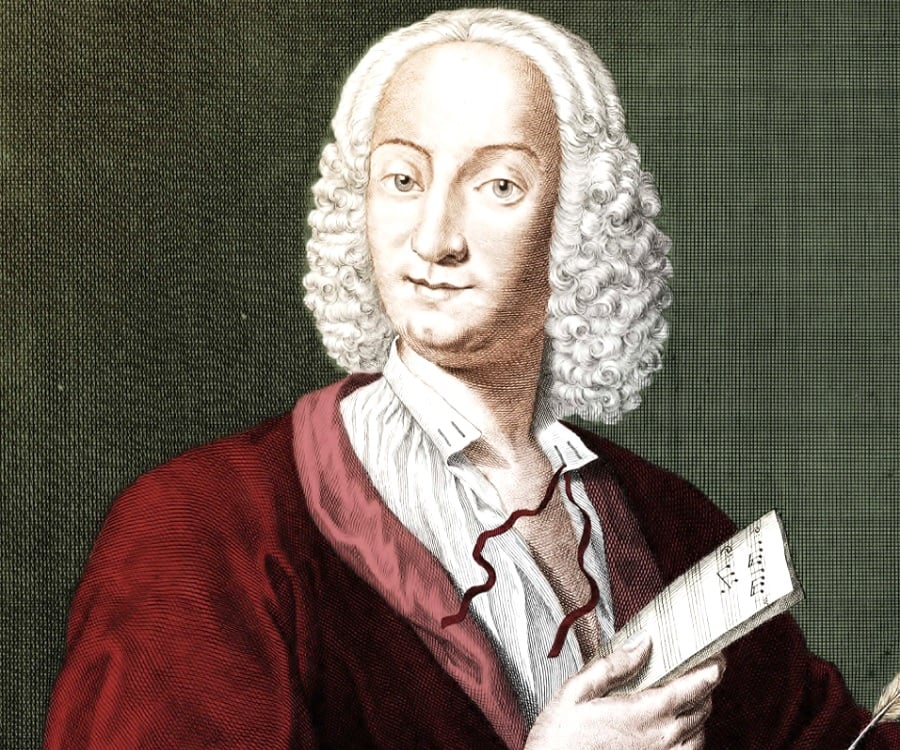Venice, Vivaldi, and the Ospedale della Pieta'
Vivaldi La Pieta
The program, with Vivaldi's Stabat Mater, RV 621 (so often subordinated to Pergolesi's swan song, but full of beauties of its own), is very carefully chosen. Beyond that is simply the fact that Jaroussky's voice is equally beautiful in its lower ranges. And finally, is the program's unity of conception. In September he became Maestro di Violino at the Pio Ospdale della Pieta orphanage in Venice. The school was for the education of girls. Vivaldi composed some of his most famous works for the school orchestra, including 'Le Quattro stagioni' or 'The Four Seasons.'
| This seventeenth-century illustration of the Ospedale della Pieta' from the Correr Museum in Venice shows the building as it probably looked in 1715. This is the Ospedale that Isabella and her friends would have known. | The marker on the map above shows the location in Venice of the site of the Ospedale della Pieta'. The ospedale comprised several buildings in its history. Today the Metropole Hotel occupies the part of the ospedale that contained the music room. Across the lane is a small museum that exhibits some of the items from the Pieta's history. | The church on the left, The Church of Santa Maria Della Pieta', is known today as Vivaldi's Church, but it wasn't completed until long after Vivaldi's death. The building to the right of the church is The Metropole Hotel. |
With growing numbers of children to feed, the Pieta' was always seeking contributions from wealthy patrons. In the seventeenth century, it found a remarkable way to increase donations: a 'choir' of girls, instrumentalists and vocalists, would perform for liturgical celebrations in this very Catholic environment, and people in Venice developed an interest in coming to see these girls. Girls were tested for musical aptitude when they were nine or so, and those who showed promise were given an extraordinary musical foundation. Even though hundreds of girls lived in the Pieta', only forty to sixty were in the orchestra. By the eighteenth century, the reputation of this all-female ensemble had spread through Europe and attracted visitors from all over the Continent, thus improving the revenue at the Pieta'.
The Ospedale della Pieta' still operates today as a non-profit agency that provides early childhood education and assists children and mothers in crisis situations.
 Vivaldi was called 'Il Prete Rosso,' The Red Priest.
Vivaldi was called 'Il Prete Rosso,' The Red Priest.This is the gondola landing at the side of the Metropole Hotel. |
Vivaldi Chiesa Della Pieta
Schola Pietatis Antonio Vivaldi ('Vivaldi's Women') is an all-female ensemble of singers and players which aims to recreate the sound of Vivaldi's Figlie di Choro, those foundlings at Venice's Ospedale della Pietà who performed at Mass and Vespers from behind grilles in the high choir galleries or 'cantorie'. It reflects the age range and vocal range of Vivaldi's musicians, with women aged 14 to 60+, some singing tenor and bass. The group uses period instruments played at 18th-century Venetian pitch (A˜440Hz).
The work of Schola Pietatis Antonio Vivaldi is based on the findings of Vivaldi researcher Micky White, which give us a comprehensive picture of the daily life of this remarkable institution during the 18th century, the heyday of its musical tradition. We even know the names and ages of the women who sang and played at specific times, together with their instruments and voices; in some cases the names of soloists are written into the music. Micky White's eagerly awaited biography 'Antonio Vivaldi. A Life in Documents' (L. S. Olschki Editore, Firenze, 2013) presents a chronological series of documents accompanied by copious notes. It brings the composer vividly to life in his musical, religious, social and family environment, and is accompanied by a CD-ROM of photographs of the original material.
Schola Pietatis Antonio Vivaldi includes several past and present members of Oxford Girls' Choir, and was founded by musicologist and choral director Richard Vendome. In 2005 it recorded “Vivaldi’s Women” and “Gloria” for BBC TV, and Vivaldi’s Vespers for Radio 3, with players drawn from the Orchestra of the Age of Enlightenment / Jerwood Experience. 'Vivaldi's Women' was awarded a Gold Medal in the 'Best Documentary on a Music Subject' category in the 2007 Park City Film Music Festival, Salt Lake City.
Vivaldi Pieta
During October 2007 the choir performed in Antwerp, Utrecht, London and Bristol with the Orchestra of the Age of Enlightenment directed by Pavlo Beznosiuk, in a programme broadcast on Netherlands Radio 4 and BBC Radio 3. In February 2009 Schola Pietatis Antonio Vivaldi recorded music for the Sky Arts series 'Peter Ackroyd's Venice', and this is now available on DVD.
